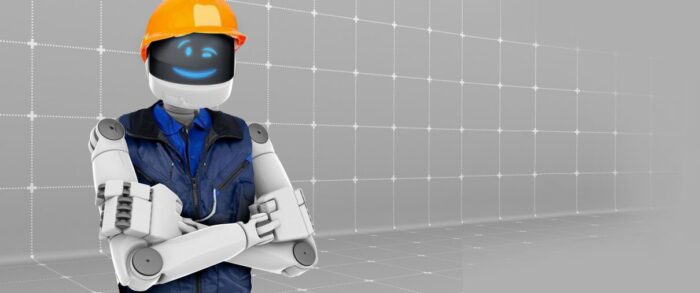Welcome to the era of robotics in manufacturing. The current shockwave of technological transformation has again reached the industrial landscape. The fourth industrial revolution is changing the way the manufacturing industry works. Notably, robots have started populating the manufacturing floors and are powering exponential growth in manufacturing productivity.
However, the transition into Industry 4.0 is posing significant challenges. The biggest barrier for industrial digitization plans is resistance against handing over processes to robots, ignoring humans. Indeed, manufacturers are grappling with the concept of a collaborative workforce, striking balance between humans and robots.
Can manufacturers outsmart such barriers and reduce production limitations by creating the perfect manufacturing workforce?
Building the Manufacturing Workforce
With legions of robots wending their way to manufacturing floors, it is critical to look at a well synchronized, human-machine collaborative production process. Since robots become more pervasive, it is important to realize that a dynamic human workforce is needed to train, administer, and repair the machinery. When at one end robots are driving productivity, businesses need to hire sales and engineering staff at the other end to support the growth.
Building a perfect manufacturing workforce is not just a matter of recruiting talent with technical skills. Raising overall technological acumen of the human workforce is essential, which is beyond technical training sessions to use digital tools. It is imperative to develop an environment for the human workforce to understand automation technology patterns.
Finally, in today’s era of robotics in manufacturing, don’t put machines before people. A good example is Germany, where the number of employees in manufacturing remained stable despite a rapid growth in robotics adoption.
Rendering people out of work, income, creative opportunities, and customer satisfaction might simply result in your automation plans backfiring. Manufacturing, in particular, will thrive in this era of robotics only if industry leaders understand the human values – thereby increasing the demand for change management. Hence, it is important to set up your smart factory that fosters better connections among the workforce, encourages human activities, and enhances capabilities to surpass technological isolation.
Robotics in Manufacturing – Reducing Production Limitations
Businesses holding firm to traditional production processes are at risk of losing out to more flexible competitors – the path to profit has changed.
Since robots have turned out to be the biggest factor of manufacturing competitiveness, businesses must reimagine their operations. For a manufacturer, important actions prior to robotizing operations are:
- auditing manufacturing processes
- exploring productivity indicators
- identifying precision and dexterity needs
- conducting ROI analysis
- conducting workforce analysis
- assessing business flexibility
With automation being industry-agnostic, manufacturers must also follow success parameters to streamline the robotics execution model. Firstly, the execution journey begins with selecting the right set of processes and tools to enable the right balance between usability and security. Further, businesses must be mindful about selecting the ideal partner to seamlessly integrate end-to-end processes. In particular, a wise move on selecting the perfect partner can help boost operational risk management capabilities. The execution journey for any manufacturer ends with a pilot design and governance strategy.
Unleashing Organizational Opportunities for Value Creation
Robotics is transforming the way manufacturing setups function – from supply chains to production. Yet, there is enormous untapped potential for manufacturers to unleash organizational opportunities.
The following recommendations will help manufacturers identify the missing links:
- It is vital for you to define the most specific benefits that apply to your manufacturing sector. Is it advantageous for you to harness data analytics for driving meaningful insights? Can cloud computing be leveraged to drive better visibility and enhanced operational responsiveness? It is time to be bold in thinking. Industry leaders already are.
- Identifying and addressing loopholes are the most important steps toward achieving operational efficiency. Is it necessary to upgrade your legacy IT systems? Are you in need of investing to boost system security?
- It is imperative to define a roadmap for adopting robotics in manufacturing. Hence, you need an appropriate governance structure with clearly stated responsibilities and ownership. Fixing an objective you expect to drive and tracking the milestones are a part of organizational accountability.
With all the buzz of robotics, it is vital for manufacturers to break through the hype and realize the value within organizations. To begin exploring benefits of robotics in manufacturing, businesses must evaluate automation offerings based on business objectives. Historically speaking, every technological breakthrough has always been backed by deep research. Ultimately, the research uncovers unthinkable opportunities for businesses.
Are You Robot Ready?
Despite the positive hype around Industry 4.0, just a handful of manufacturers are reaping the benefits of robotics. Nevertheless, robots have come a long way. Soon, robotics will do more for manufacturers. This generation of robots can collect data through sensors, integrate and interpret data, and are dexterous and sensitive to diverse situations. Sensors, action-based artificial intelligence, and actuators have geared up industrial robots of the future. Today’s robots can self-configure, self-heal, and self-optimize.
Adopting disruptive robotics technology entails risks. It is important for manufacturers to strike a careful balance to tide over barriers.
Are you robot ready to define your agile factory?
Whether you are building robotics infrastructure or creating a state-of-the-art execution strategy, we have the right solutions to power your business with insightful information. With robust research methodologies and dynamic consulting, SG Analytics has everything to meet your requirements.

